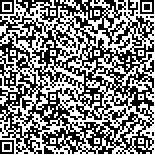| 引用本文: | 魏嘉利,赵恂,陈蕾,张玫,袁耀佐,柳文媛.蛋黄卵磷脂在中国药典标准中残留溶剂测定方法的优化[J].中国现代应用药学,2023,40(8):1091-1095. |
| WEI Jiali,ZHAO Xun,CHEN Lei,ZHANG Mei,YUAN Yaozuo,LIU Wenyuan.Optimization of Residual Solvent Determination of Egg Yolk Lecithin in Chinese Pharmacopoeia[J].Chin J Mod Appl Pharm(中国现代应用药学),2023,40(8):1091-1095. |
|
| |
|
|
| 本文已被:浏览 1848次 下载 1006次 |

码上扫一扫! |
|
|
| 蛋黄卵磷脂在中国药典标准中残留溶剂测定方法的优化 |
|
魏嘉利1,2, 赵恂2,3, 陈蕾4, 张玫2,3, 袁耀佐2,3, 柳文媛1
|
|
1.中国药科大学药物分析系, 南京 210009;2.江苏省食品药品监督检验研究院, 南京 210019;3.国家药品监督管理局化学药品杂质谱研究重点实验室, 南京 210009;4.国家药典委员会, 北京 100061
|
|
| 摘要: |
| 目的 建立顶空气相色谱法测定蛋黄卵磷脂中的石油醚、乙醇、乙醚、丙酮、正己烷共5种残留溶剂的含量,并采用气相色谱-质谱联用技术,结合质谱数据检索对样品中的其他挥发性杂质进行结构鉴定。方法 GC条件为色谱柱:DB-624UI毛细管柱(60 m×0.25 mm,1.4 μm),采用程序升温;检测器:氢火焰离子化检测器;检测器温度:250 ℃;分流比:20∶1。GC-MS条件为GC条件的载气:氦气、不分流模式进样,其余条件同上述GC条件。质谱条件的离子源温度:230 ℃;接口温度:230 ℃;采用电子轰击离子源;电离能量:70 eV;扫描方式:Q3Scan;扫描范围:m/z 45~500;检测时间:7~28.5 min。结果 5种溶剂的分离度良好,样品中其他挥发性杂质对5种待测组分的检测无影响;5种成分在各自浓度范围内呈良好的线性关系(r>0.999);检测限范围为(0.003~0.13)μg·mL–1,定量限范围为(0.017~0.21)μg·mL–1;平均回收率为93.74%~104.31%;精密度、重复性的RSD均<5%。结论 本方法操作简便、灵敏度高,可以用于测定蛋黄卵磷脂中的残留溶剂。 |
| 关键词: 蛋黄卵磷脂 残留溶剂 顶空气相色谱法 |
| DOI:10.13748/j.cnki.issn1007-7693.20220775 |
| 分类号:R917.101 |
| 基金项目:国家药典委员会药品标准制修订(2020Y002);江苏省药品监督管理局科研计划课题(24) |
|
| Optimization of Residual Solvent Determination of Egg Yolk Lecithin in Chinese Pharmacopoeia |
|
WEI Jiali1,2, ZHAO Xun2,3, CHEN Lei4, ZHANG Mei2,3, YUAN Yaozuo2,3, LIU Wenyuan1
|
|
1.Department of Pharmaceutical Analysis, China Pharmaceutical University, Nanjing 210009, China;2.Jiangsu Institute For Food and Drug Control, Nanjing 210019, China;3.NMPA Key Laboratory for Impurity Profile of Chemical Drugs, Nanjing 210019, China;4.Chinese Pharmacopoeia Commission, Beijing 100061, China
|
| Abstract: |
| OBJECTIVE To establish a headspace gas chromatography method for the determination of five kinds of residual solvents in egg yolk lecithin, such as petroleum ether, ethanol, diethyl ether, acetone and n-hexane. Using gas chromatography-mass spectrometry technology, the mass spectrometry retrieval data for other volatile impurities in the sample were combined to identify the structure. METHODS GC conditions were column: DB-624UI capillary column(60 m× 0.25 mmm 1.4 μm), the column temperature was raised by program; Detector: flame ionization detector; detector temperature: 250 ℃; Split ratio: 20∶1. GC-MS conditions were GC conditions: the carrier gas was helium, the remaining conditions accorded with GC conditions above. MS conditions were ion source temperature: 230 ℃; the interface temperature was set at 230 ℃; using electron impact inoization; EI energy: 70 eV; scanning mode: Q3Scan mode; scan range: m/z 45-500; detection time: 7.00-28.50 min. RESULTS The 5 residual solvents tested were completely separated, other volatile impurities in the sample had no influence on the 5 residual solvents. The linear relationship was good in the concentration range(r>0.999); limit of detection were (0.003-0.13)μg·mL-1, limit of quantitation were (0.017-0.21)μg·mL-1; average recoveries were 93.74%-104.31%; accuracy and repeatability were <5%. CONCLUSION The method is simple, highly sensitive and reproducible, it can be used to determine the residual solvents in egg yolk lecithin. |
| Key words: egg yolk lecithin residual solvent headspace gas chromatography |
|
|
|
|
